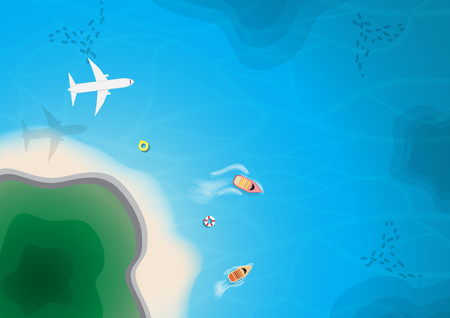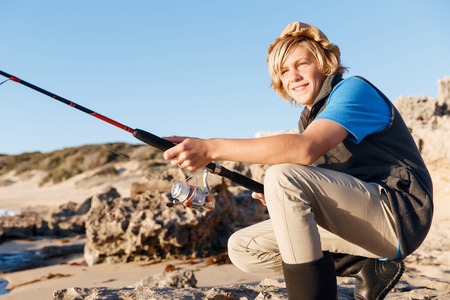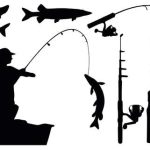1. Research Before You Roll Out
Before you even hook up the boat or load your tackle, doing your homework on a new lake can give you a huge edge in a tournament. With the right online tools and resources, you can start building a game plan without ever leaving home.
Tap into Online Resources
The internet is loaded with valuable info for anglers. Start by checking out state wildlife agency websites, like the Texas Parks and Wildlife Department or Minnesota DNR. These sites often have detailed lake maps, fish stocking reports, seasonal patterns, and fishing forecasts. You can also use apps like Navionics or Fishbrain to see underwater contours and community fishing spots.
Join Fishing Forums & Social Media Groups
Online communities are goldmines of local knowledge. Join forums like BassResource.com or TheBassBarn.com where anglers share tips, recent catches, and even GPS coordinates. Don’t forget Facebook Groups dedicated to specific lakes or regions—search for the name of the lake plus “fishing” and request to join. Engage with members, ask questions respectfully, and keep an eye on photo posts to spot lure trends or productive areas.
Dig Into Historical Tournament Data
If you’re prepping for a tournament, look at what’s worked in past events. Sites like Major League Fishing or Bassmaster often post full recaps including winning baits, locations, depths fished, and weather conditions. Use this data to recognize patterns based on time of year and lake type.
Where to Find Key Info Online
| Resource Type | Examples | What You Can Learn |
|---|---|---|
| State Wildlife Websites | TPWD, MN DNR | Lake maps, stocking reports, regulations |
| Fishing Forums | BassResource.com, TheBassBarn.com | User reports, bait suggestions, hot spots |
| Social Media Groups | Facebook Lake Groups | Recent catches, water conditions, seasonal changes |
| Tournament Archives | Bassmaster, MLF | Bait choices, depth ranges, key locations during tournaments |
Pro Tip:
Create a digital notebook using apps like Evernote or Google Docs to save all your findings. Organize by lake name and date so when its go-time, youve got everything in one place.
The more time you spend gathering intel before launch day, the less time you’ll waste guessing once youre on the water. Think of this step as laying the foundation for a successful pre-fish strategy.
2. Map Study and Electronics Scouting
Before you ever hit the water, one of the most effective ways to prep for a tournament on a new lake is by breaking down maps and using your electronics. This step helps you get ahead of the game by identifying key areas worth checking out when you finally launch your boat.
Start with Lake Maps and Contour Lines
Grab a detailed topographic map of the lake—either paper or digital—and focus on contour lines. These lines show depth changes, which are critical in locating fish-holding structure like drop-offs, ledges, humps, and creek channels. The tighter the lines, the steeper the change in depth.
| Contour Feature | What It Indicates |
|---|---|
| Tight Lines | Steep drop-offs or ledges (good ambush spots for bass) |
| Wide Spacing | Gradual slopes (often used by roaming baitfish) |
| Isolated Humps | Pockets of structure that can hold fish year-round |
Use Satellite Imagery for Hidden Clues
Satellite images from services like Google Earth can reveal above-water features such as docks, riprap banks, submerged roads, and even vegetation lines during low water periods. Look back at historical imagery to spot seasonal changes and locate areas that might not be obvious on traditional maps.
Pre-Program Waypoints Before You Launch
Once you’ve identified potential hotspots on maps and satellite images, plug those locations into your GPS or fishfinder as waypoints. Label them clearly—whether it’s “Main Lake Point,” “Creek Channel Bend,” or “Grass Flat”—so you know what youre looking at when youre on the water.
Example Waypoint Labeling System:
| Name | Description |
|---|---|
| Main Pt 1 | Main lake point with sharp drop to 25 ft |
| Bend Creek 2 | Bend in creek channel with nearby brush pile |
| Docks SE | Southeast bank with multiple shaded docks |
Dive Into Your Fishfinder and Mapping Software
Your electronics are your eyes underwater. Use mapping software like Navionics or Lakemaster to overlay contours and identify offshore structure. Then, use sonar and side imaging to find bait balls, cover like stumps or rock piles, and any signs of fish activity.
Tips for Using Electronics Effectively:
- Sensitivity Settings: Adjust based on water clarity to get clearer images.
- Sidescan Range: Set to around 80–100 feet per side for wide coverage without losing detail.
- Sweep Slowly: Cruise at 3–5 mph when scanning to give your sonar time to read properly.
The more time you spend studying maps and scouting electronically before your trip, the more confident youll be once youre on the water. Having a game plan reduces wasted time and helps you start dialing in patterns faster during pre-fishing or tournament day.

3. Dialing in a Game Plan
Once youve done your homework and scouted the lake, its time to put together a solid game plan. Building a strategy for tournament day isnt just about picking random spots to fish—its about making smart decisions based on your strengths, the conditions, and how bass behave during that season.
Prioritize Fishing Zones That Match Your Strengths
If youre most comfortable flipping jigs into shallow cover or working crankbaits over deep structure, start by identifying areas of the lake that allow you to play to those strengths. You don’t need to fish the entire lake—just focus on zones where you can be most effective.
| Technique | Preferred Zone | Ideal Conditions |
|---|---|---|
| Flipping/Pitching | Shallow coves with wood or vegetation | Warm water, sunny conditions |
| Deep Cranking | Main lake points or ledges | Post-spawn, summer heat |
| Topwater | Flat banks or over submerged grass | Early morning, low light |
Think in Terms of Water Columns
Bass can be caught at different depths depending on the season and weather. Break down your approach by targeting specific parts of the water column: topwater, mid-depth, or bottom. This helps you stay efficient and make quick adjustments if needed.
Water Column Breakdown:
- Topwater: Early mornings or cloudy days; use poppers, frogs, or walking baits.
- Mid-depth: Use spinnerbaits, jerkbaits, or swimbaits along drop-offs or weed edges.
- Bottom: Jigs, Texas rigs, or Carolina rigs around rocks, brush piles, or deeper structure.
Adapt Goals Based on Seasonal Patterns
Your expectations should shift depending on the time of year and what phase bass are in—pre-spawn, spawn, post-spawn, summer pattern, or fall transition. For example, in early spring, focus on staging areas near spawning flats. In summer, look for fish schooled up offshore.
Seasonal Focus Example:
| Season | Main Pattern | Target Areas |
|---|---|---|
| Pre-Spawn (Late Winter–Early Spring) | Migrating toward spawning flats | Main lake points near coves |
| Spawn (Spring) | Nesting in shallow water | Sandy pockets and protected bays |
| Summer | Suspending offshore or going deep for shade | Ledges, creek channels, docks with depth |
| Fall Transition | Chasing baitfish shallow again | Banks near creek mouths and coves |
Create a Flexible Plan with Contingencies
No matter how good your plan is, things change fast on tournament day—wind shifts, boat pressure increases, or your primary spot dries up. Be ready with backup zones and techniques so you can adapt quickly. Think of it as building an “A-B-C” plan: A is your go-to pattern, B is your backup area or lure switch-up, and C is your emergency move when nothing’s working.
The key is staying confident but flexible. Build your plan around what you do best while keeping an open mind for adjustments once youre out there on the water.
4. Practice with a Purpose
When youre prepping for a tournament on unfamiliar water, your practice time is limited—and every minute counts. Instead of just casting aimlessly and hoping for bites, approach each outing with a specific goal: gather information that will help you make smarter decisions come tournament day.
Fish for Clues, Not Just Fish
Sure, catching bass during practice feels good—but it’s not always the most productive use of your time. Focus on learning patterns, identifying high-percentage areas, and understanding how fish respond to different conditions and presentations. Youre building a playbook, not just filling a livewell.
Dial in Your Presentation
Use practice to test different baits, retrieves, colors, and depths. The goal is to figure out what kind of presentation works best under current conditions. Keep track of how fish react—or don’t react—to each setup so you can fine-tune your approach quickly on game day.
Presentation Tuning Checklist
| Variable | Options to Test | What to Watch For |
|---|---|---|
| Bait Type | Crankbait, Jig, Drop Shot, Texas Rig | Bites per bait type in similar locations |
| Retrieve Speed | Slow roll, steady retrieve, burn | How fish respond at different tempos |
| Color | Natural vs. bold colors | Which color gets more reactions in clear or stained water? |
| Depth | Shallow (0-5 ft), Mid (6-12 ft), Deep (13+ ft) | Where are the active fish holding? |
Eliminate Dead Water Fast
Your job during practice isn’t just to find fish—it’s also to rule out where they’re not. Don’t waste time grinding unproductive spots. If an area doesn’t show signs of life after several different presentations and angles, move on. Cover as much ground as possible so you can focus on the best stuff when it matters.
Be Ready to Adjust On the Fly
Lakes change fast—especially with shifting weather or fishing pressure. Use your practice days to build flexibility into your strategy. Have backup plans ready for different scenarios so you can pivot quickly if your primary pattern falls apart.
Quick Adjustment Scenarios
| If This Happens… | You Might Try… |
|---|---|
| Cold front moves in overnight | Suspend baits or slow finesse tactics near cover |
| Your main area gets crowded with other boats | Run secondary spots or less obvious structure nearby |
| No wind on tournament day after windy practice days | Switch from reaction baits to slower techniques like shaky heads or ned rigs |
The more intentional you are with your practice sessions, the more confident and prepared youll be when its time to launch on tournament day. Fish smart—not just hard—and youll stack the odds in your favor.
5. Tournament Day Tactics and Adaptation
After days or even weeks of pre-fishing and map study, tournament day is where it all comes together—or falls apart. The key to success lies in executing your game plan with confidence while staying flexible enough to adjust on the fly. Heres how to make smart decisions when it counts the most.
Early Morning Feedback: Reading the Water
The first hour of the tournament is critical. It’s your chance to see if your prep work lines up with real-time conditions. Pay close attention to water clarity, temperature, bait activity, and fish behavior. If your starting spot isn’t producing as expected, dont panic—but don’t wait too long to switch things up either.
Quick Checklist for First-Hour Evaluation:
| Factor | What to Watch For | Possible Adjustment |
|---|---|---|
| Water Clarity | Muddy or clearer than expected | Change lure color or presentation speed |
| Bait Activity | No visible baitfish or surface action | Try deeper areas or structure-oriented spots |
| Fish Behavior | Short strikes or follows but no bites | Downsize bait or slow down retrieve |
Making Smart Adjustments Without Overthinking
If something feels off, trust your instincts. Successful anglers know when to pivot without second-guessing themselves all day. Remember what you learned during practice—especially patterns that were consistent across different areas of the lake. Use those patterns as a foundation for mid-day adjustments.
Signs You Should Change Your Plan:
- You’ve fished high-confidence areas with no results after an hour.
- The weather has shifted significantly from practice days (wind, cloud cover, etc.).
- You see other competitors catching fish in different types of water than youre fishing.
Time Management: Maximize Every Minute
Tournament days fly by fast. Managing your time wisely can be just as important as choosing the right bait. Break the day into chunks—morning, midday, and afternoon—and set goals for each period. If you’re behind on your weight target by noon, it may be time to take a risk and hit an untested area from your map study or practice notes.
Sample Time Breakdown Strategy:
| Time Period | Main Focus | Backup Plan |
|---|---|---|
| Morning (Launch – 10 AM) | Hit primary spots identified in practice | If no bites by 9 AM, move to secondary pattern area |
| Midday (10 AM – 1 PM) | Work through structure-oriented areas or ledges | If bite slows, try finesse tactics or deeper water |
| Afternoon (1 PM – Weigh-in) | Cull smaller fish and upgrade limit size | Run-and-gun style fishing covering multiple spots quickly |
Stay Confident Under Pressure
No matter how tough the bite gets or how much pressure youre feeling from other competitors, keeping a positive mindset is crucial. Confidence leads to better decision-making and cleaner execution. Stick with techniques youve practiced and believe in—even minor adjustments can trigger a big bite when it matters most.
Pro Tip:
If youre second-guessing a move, give yourself a firm deadline (like “15 more minutes”) before committing to change spots. This gives your current location one last chance without wasting valuable time overthinking.
Tournament fishing on unfamiliar lakes is never easy—but with a solid plan, adaptive mindset, and good time management, you’ll be ready to compete at a high level no matter where the trail takes you.


